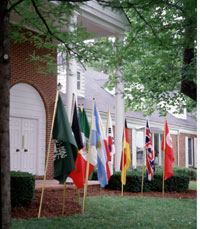College of Architecture & Urban StudiesSchool of Public and International Affairs
OverviewThe School of Public and International Affairs (SPIA) provides students interested in public issues with opportunities to gain perspectives and skills from several related disciplines. SPIA is a school within the College of Architecture and Urban Studies and is made up of the Center for Public Administration and Policy, the Government and International Affairs Program, and the Urban Affairs and Planning Program. Undergraduate degrees are offered by Urban Affairs and Planning – a B.S. in Environmental Policy and Planning and a B.A. in Public and Urban Affairs (see Urban Affairs and Planning in this catalog). In addition, SPIA-affiliated departments in other colleges (Geography in Natural Resources; Political Science, International Studies, and Science and Technology in Society in Liberal Arts and Human Sciences; Agricultural and Applied Economics in Agriculture and Life Sciences) offer selected SPIA undergraduate concentrations in urbanization: planning and policy, global development, environmental affairs, public and nonprofit management, and public policy. SPIA sponsors the Washington Semester, a ten-week, twelve-credit-hour summer program that allows undergraduate students to combine Washington, D.C.-area internships with course work for academic credit. For more information about undergraduate degree programs, students should contact Urban Affairs and Planning; for information on the various concentrations, students should contact the main office of any of the affiliated departments. Information on graduate programs may be obtained from the Center for Public Administration and Policy, Government and International Affairs, and Urban Affairs and Planning. Undergraduate Course Description (SPIA)1004 (PSCI 1004): NATIONS AND NATIONALITIES College of Architecture and Urban Studies Programs of Study Art and Art History | Architecture | Building Construction | Industrial Design | Interior Design Landscape Architecture | School of Public and International Affairs |
||
